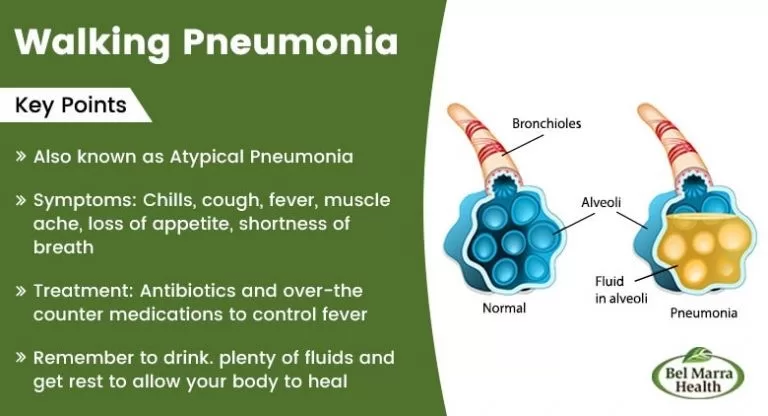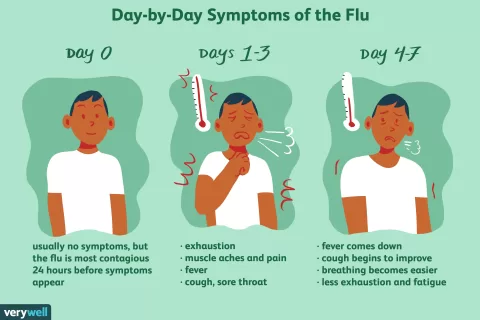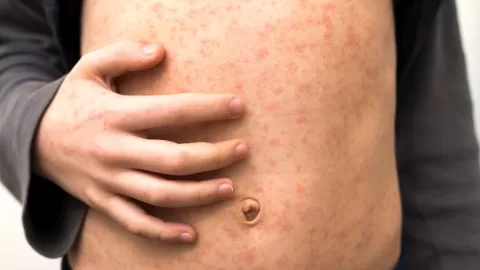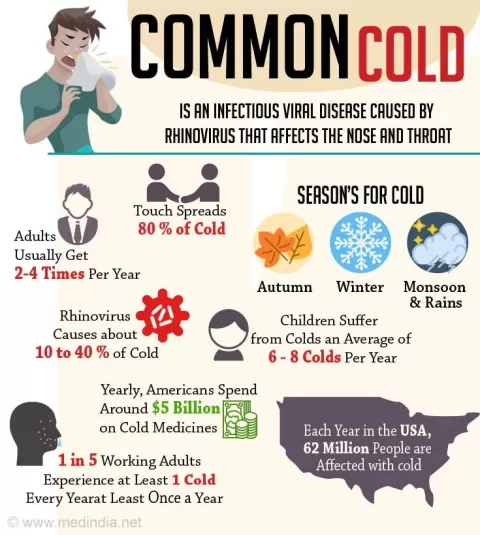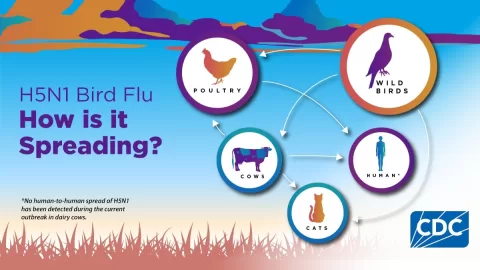Walking pneumonia, an infection primarily caused by the bacteria Mycoplasma pneumoniae, is becoming increasingly common in recent years, especially among children. This form of pneumonia often presents with mild symptoms that can easily mimic a regular cold, making it difficult for parents to discern when their child is affected. Typical symptoms of walking pneumonia include a persistent cough, headaches, red eyes, and rashes, which can lead to discomfort and concern. The CDC has raised awareness regarding the rising cases of walking pneumonia in children, particularly noted during the transitional seasons, as many cases were reported following the return to in-person schooling. Effective walking pneumonia treatment is crucial, and while many children may recover at home with rest and hydration, serious complications may necessitate a doctor’s evaluation and possible antibiotic therapy.
Also known as atypical pneumonia, walking pneumonia is characterized by a milder onset of respiratory infections without the need for hospitalization. It typically emerges due to the Mycoplasma pneumoniae bacteria, affecting individuals of all ages, but particularly children who may be more susceptible to its subtle symptoms. Parents should be vigilant about the warning signs that include not just cough but also fatigue, fever, and unusual rashes. Understanding the nuances of this condition, including its symptoms and appropriate treatment options, can help safeguard the health of young ones. Healthcare professionals encourage the use of preventive measures, especially during peak seasons, to mitigate the spread of this illness.
Understanding Walking Pneumonia: Symptoms and Diagnosis
Walking pneumonia, primarily caused by the Mycoplasma pneumoniae bacteria, exhibits symptoms that may be mistaken for a common cold. These symptoms often include a persistent cough that can worsen over time, as well as other signs like headaches, red eyes, and rashes. As this condition can present itself subtly, many parents may not immediately recognize it in their children, leading to delayed diagnosis and treatment. Understanding these symptoms is key for timely intervention, especially considering the rising incidence of walking pneumonia in children.
The diagnostic process for walking pneumonia often involves a thorough clinical evaluation, where healthcare professionals assess symptoms and medical history. Chest X-rays may be employed in more severe cases to identify lung inflammation or other complications. Moreover, the Centers for Disease Control and Prevention (CDC) highlights the need for awareness regarding walking pneumonia, particularly as cases tend to increase during the spring and summer months, making timely diagnosis essential to prevent the spread of this infection.
Effective Treatment Strategies for Walking Pneumonia
When it comes to walking pneumonia treatment, it’s crucial to recognize that most children respond well to at-home care. This includes ensuring they are well-hydrated, getting ample rest, and potentially using over-the-counter medications to alleviate cough and fever. However, if symptoms persist or escalate, such as difficulty breathing, parents should seek medical advice promptly. Treatment typically involves antibiotics tailored to combat the Mycoplasma pneumoniae bacteria, with macrolides being the most commonly prescribed.
Despite walking pneumonia being mainly treatable at home, monitoring children closely is essential. Parents should watch for anything unusual and maintain good hygiene practices to minimize the risk of transmission. By working proactively and observing any troubling changes in their child’s health, parents can help facilitate faster recovery and avert complications associated with walking pneumonia.
The Rise of Walking Pneumonia Cases in Children
There has been a noticeable increase in walking pneumonia cases among children in the U.S., particularly those aged 2-4 years. This surge has been reported by pediatric pulmonologists, with many attributing the rise in cases to the return to school and the subsequent interaction among children. With a history of primarily affecting older children, it is significant that younger populations are now experiencing higher rates of this respiratory illness.
This increase may be linked to various factors, including the ongoing effects of fluctuating weather patterns and increased social contact among young children in school settings. The CDC has been monitoring these trends closely, and they emphasize the importance of early identification and intervention to help manage outbreaks efficiently. Highlighting the need for vigilance regarding symptoms of walking pneumonia can empower parents and caregivers to take action promptly, reducing the risk of extended illness within schools and communities.
Symptoms of Walking Pneumonia: What to Look For
Recognizing the symptoms of walking pneumonia is essential for timely treatment. The initial signs often mimic those of a mild cold, including a persistent cough, nasal congestion, and slight fever. However, as the condition progresses, symptoms can intensify and lead to complications such as difficulty breathing or chest pain, distinguishing it from a typical upper respiratory infection.
In addition to respiratory symptoms, children afflicted with walking pneumonia may also exhibit less common signs, such as headaches, fatigue, and rashes. These varied symptoms can easily confuse parents, particularly if they appear just after a child has recovered from another illness. Awareness of these symptoms is crucial, as early detection can significantly improve outcomes and reduce the risk of spreading the infection to others.
Walking Pneumonia in Children: Prevention and Care
Preventing walking pneumonia in children starts with education and simple hygiene practices. Regular handwashing, avoiding close contact with infected individuals, and keeping children home when sick can significantly mitigate the risk of transmission. In school settings, it is particularly critical for parents and teachers to remain vigilant and encourage good respiratory etiquette, such as covering coughs and sneezes.
Furthermore, parents should educate their children about not sharing personal items such as utensils or drinks, which can facilitate the spread of Mycoplasma pneumoniae. By implementing these preventive strategies, families can contribute to lower incidence rates of walking pneumonia, especially given the observed patterns correlating its spread with the school environment.
The Role of the CDC in Monitoring Walking Pneumonia
The Centers for Disease Control and Prevention (CDC) plays a vital role in monitoring the trends and spread of walking pneumonia across the United States. By collecting data on infection rates, the CDC can identify outbreaks and provide guidelines for healthcare practitioners and the general public on managing this illness effectively. Their efforts in raising awareness about the symptoms and recommended preventive practices have been essential, especially as cases have surged in recent years.
In addition to surveillance, the CDC provides resources for parents and caregivers, including information on when to seek medical attention and effective treatment options available for walking pneumonia. By leveraging these resources, families can stay informed and proactive in the fight against respiratory infections, ensuring better health outcomes for children.
Mycoplasma Pneumoniae: The Bacteria Behind Walking Pneumonia
Mycoplasma pneumoniae is the atypical bacterium responsible for many cases of walking pneumonia, especially in children and young adults. Unlike other bacteria, Mycoplasma pneumoniae lacks a cell wall, which makes it resistant to standard antibiotics like amoxicillin. Understanding this key difference is essential, as it influences the treatment approach tailored to the bacterial strain.
Subsequently, awareness around Mycoplasma pneumoniae is crucial for accurate diagnosis and effective treatment. This bacterium thrives in crowded environments, such as schools, resulting in cluster infections. As we learn more about its impact on pediatric health, ongoing research aims to enhance treatment protocols and develop preventative vaccines, ultimately reducing the burden of walking pneumonia.
Home Remedies and Supportive Care for Walking Pneumonia
For many children suffering from walking pneumonia, supportive care at home can be immensely beneficial. Methods such as using a humidifier in the child’s room can help alleviate cough and breathing difficulties. Additionally, ensuring that the child remains hydrated and receives nutritious meals supports their immune system in fighting off the infection effectively.
Furthermore, over-the-counter medications can help manage fever and discomfort. However, parents should consult with a healthcare professional before administering any medication to ensure appropriate choices for their child’s age and health condition. Providing comfort and support during recovery can help children navigate walking pneumonia with less stress and anxiety.
When to Seek Medical Intervention for Walking Pneumonia
While many children with walking pneumonia can be treated effectively at home, specific symptoms necessitate prompt medical intervention. If a child exhibits persistent high fever, difficulty breathing, or severe cough coupled with lethargy, it is essential to consult a healthcare provider immediately. Early evaluation can prevent potential complications and ensure that the child receives appropriate treatment.
In cases where over-the-counter treatments do not alleviate symptoms or if a child’s condition deteriorates, healthcare providers may recommend additional diagnostic tests, such as chest X-rays or lab work, to rule out other respiratory conditions. Being proactive and responsive to signs of worsening illness is key in managing walking pneumonia and safeguarding the child’s health.
Frequently Asked Questions
What are the common symptoms of walking pneumonia in children?
Walking pneumonia symptoms in children can mimic a mild cold but may worsen. Common symptoms include a persistent deep cough, headaches, red eyes, rashes, and sometimes fever. Parents should closely monitor these symptoms, especially if coughing persists.
What is the treatment for walking pneumonia caused by Mycoplasma pneumoniae?
Walking pneumonia treatment typically involves antibiotics such as macrolides, as traditional antibiotics like amoxicillin are ineffective against Mycoplasma pneumoniae. Alongside medication, rest, hydration, and over-the-counter medications can help alleviate symptoms.
How does walking pneumonia differ from regular pneumonia?
Walking pneumonia, often caused by Mycoplasma pneumoniae, is usually milder than traditional pneumonia. While it shares similar symptoms, individuals with walking pneumonia can often function normally without severe illness, hence the term ‘walking’.
Can walking pneumonia occur in young children?
Yes, walking pneumonia can occur in young children. Recent trends indicate an increase in cases among children aged 2-4, historically an age group less affected. Parents should be vigilant about symptoms and consult a doctor if needed.
What does the CDC say about the prevalence of walking pneumonia?
The CDC has reported an uptick in walking pneumonia cases, notably during spring and summer, which contribute to an overall rise in incidence as children return to school. Parents are advised to be aware of the symptoms and monitor their children closely.
Are there specific preventive measures for walking pneumonia in children?
To help prevent walking pneumonia in children, practicing good hygiene such as regular handwashing, keeping children away from sick peers, and ensuring they are up-to-date with vaccinations can reduce the risk of infection.
What should I do if my child shows signs of walking pneumonia?
If your child exhibits symptoms of walking pneumonia, such as a persistent cough or difficulty breathing, contact a healthcare provider. Treatment often involves antibiotics and supportive care. Monitor their symptoms, and seek medical attention if conditions worsen.
| Key Point | Details |
|---|---|
| Cause | Walking pneumonia is caused by Mycoplasma pneumoniae bacteria. |
| Increasing Prevalence | There is a rise in cases, especially among children, following the return to school. |
| Symptoms | Symptoms may resemble cold symptoms, including persistent cough, red eyes, rashes, and headaches. |
| Age Group | Historically seen in older children, younger children aged 2-4 are now experiencing more cases. |
| Treatment | Most children can be treated at home, but doctors may be needed for severe symptoms. Treatment usually involves antibiotics. |
| Prevention | Parents should monitor their children and maintain good hygiene practices to prevent spread. |
Summary
Walking pneumonia is becoming a significant health concern, especially among children, as its prevalence increases across the U.S. The rise in cases amid school reopenings and the confusion with common cold symptoms necessitate increased awareness and monitoring by parents. Proper treatment and preventive measures can help manage and reduce the spread of this bacterial infection.
The content provided on this blog (e.g., symptom descriptions, health tips, or general advice) is for informational purposes only and is not a substitute for professional medical advice, diagnosis, or treatment. Always seek the guidance of your physician or other qualified healthcare provider with any questions you may have regarding a medical condition. Never disregard professional medical advice or delay seeking it because of something you have read on this website. If you believe you may have a medical emergency, call your doctor or emergency services immediately. Reliance on any information provided by this blog is solely at your own risk.



